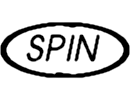


| Uwe R. Zimmer |
| Publications |
| Activities |
| Students |
|
Resources
|
|||||||||
|---|---|---|---|---|---|---|---|---|---|
Robotics in ..
|
|||||||||
| Autonomous Underwater Vehicles |
|||||||||
| Citations |
|
![]()
![]()
(from Spatial Perception to Identification with Neural networks)
Project abstract
The SPIN-project is introduced as a suggestion for the generation of geometric 3-d symbols out of current working environments, where the a-priori model of the expected world is kept as small as possible. In the context of this task, visual search (steering), and several completion and clustering methods are introduced and applied. The discussed methods together with the proposed overall structure try to improve stability and reliability aspects in the object recognition domain of mobile platforms. In order to emphasize the realtime aspects, an introduction to the realtime operating- and communication-system ALBATROSS together with the integration strategy of SPIN into a hard realtime system is given.The SPIN system has shown up an almost model-free method of generating stable, geometric 3-d symbols out of current working environments. In the course of development, some new and specific techniques were introduced and investigated – some of them even relevant outside the focus of geometric abstractions or visual steering.
The shown visual search methods are especially dedicated to highly focused devices. This field is prevailingly unexplored, due to the fact, that visual search is mainly motivated by physiological investigations concerning visual cortexes (mainly in cats and monkeys), which are also focused, but always offer a possibility of gathering blurred information from immediate surroundings simultaneously. Therefore the steering methods from the literature are based on "parallel" vision systems, instead of serial sensor readings, as assumed in the SPIN system. The orders of magnitude between the realtime information bandwidth in both configurations has forced, beside other constraints, new methods, introduced in this thesis.
Motivated by the need of a-priori knowledge during a kind of bootstrap in the abstraction pipeline of SPIN, a new neural fuzzy decision method (SPIN-NFDS) was introduced and proven applicable in the given context, even in general terms.
The classification of 3-d surfaces through dynamic self-organising maps was not a completely new approach, but extends the methods given in the literature by some important features ensuring lifelong learning abilities.
Finally the SPIN system has introduced a complete pipeline of sub-symbolic, adaptive, geometric abstraction components, not yet investigated in this complexity.
For related mobile robot problems please refer to the ALICE-project